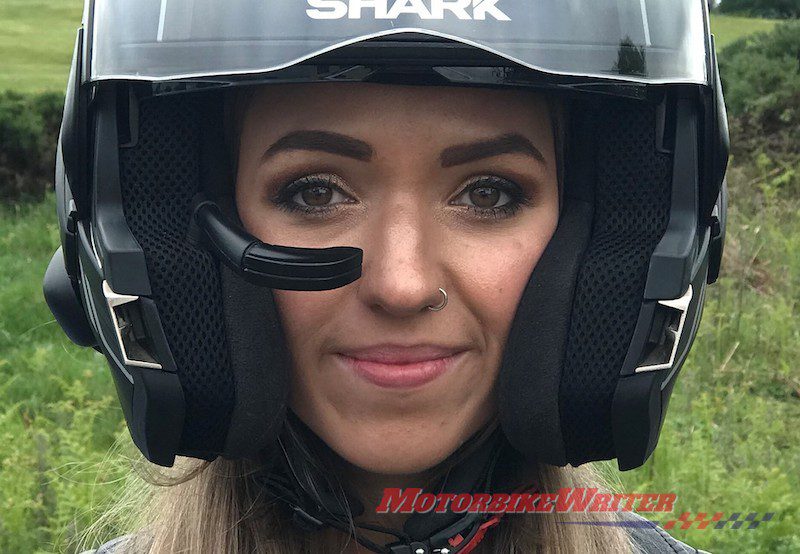After almost four years of development, British tech company BikeSystems is finally about to release their next gen BikeHUD head-up display for motorcycle helmets.
It will feature a peripheral screen (called a “monocle”) that can display speed, satnav directions, a rearview camera and eventually bike information such as fuel, revs, etc.
Unlike some other HUD helmet devices, it does not include a Bluetooth intercom as they are concentrating on getting this tech right. However, it may be added at a later stage of development.
BikeSystems has kicked off a Indiegogo crowd-funding campaign to raise $A69,579. They have so far raised more than $2000 so far.
Supporters of this campaign can expect deliveries to start in December 2019.
PPrices start from £349 RRP (about $A620). Through Indiegogo various bundle discounts are available saving over 40%.
Founder Dave Vout says the next gen BikeHUD device will be available from February 2020 through their website and local dealerships.
They are currently developing a worldwide dealer network.
Next gen BikeHUD 
The next gen BikeHUD weighs just 90g and comes with a tiny 8mm screen about the size of your little finger.
The multi-adjustable arm allows the rider to set the screen just under your left or right eye, so the image appears around 2m to one side of the bike’s front wheel.
“It’s close enough for your forward vision to see with the blink of an eye but won’t cause distraction,” Dave says.
“In fact, its positioning is almost exactly where car HUDs are located and in line with industry automotive recommendations.”
Speed is colour coded and the focus is set at infinity so you don’t go cross-eyed.
The screen/monocle fits to the helmet via a plate inside the lining using the helmet’s mounting studs.
The battery and receiver fit to the outer shell via self-adhesive Velcro-type tape.
(Our understanding is that NSW and Victorian police still believe external fittings render a helmet illegal, but NSW have been ordered not to fine riders until the issue is officially resolved.)
The rearview camera is fitted the back of your bike via a license-plate bracket. It provides a continuous live feed via an ultra-low latency wireless connection.
“That means you always know what’s happening behind you regardless of where your helmet is pointing,” Dave says.
There are no buttons to press, no helmet tapping and no spoken instructions required.
It simply shows all the information in a constant feed.
Price
The BikeHUD CORE package with rearview and speed information starts at £349 (about $A620) on Indiegogo.
“Smartphone-style batteries mean there is no installation to worry about and the whole thing just works,” Dave says.
You will also be able to link the device to your phone using the free BikeHUD app to get GPS navigation information.
“We intend also to add specialised Apps in future for racing/ track days and Dakar-style off-road competitions,” Dave says.
“We’ve already had basic talks with the MotoGP software sub-contractors.”
Next July, they will add the ability to link to your bike.
“For information such as engine revs, gear, indicators, oil pressure, ignition and fuel warnings we have a plug-in to the diagnostic port in an OBDII format,” Dave says.
“Precisely what we can display very much depends on the year, make and model of the bike.”
They are finalising battery size and power management, but expect both the monocle and camera to last 8–12 hours.
Dave says it should fit 90% of all helmets, including full, flip, jet, cruiser, pudding and most adventure or off-road helmets.
It comes with a two-year warranty.
Long time coming
In 2011, the company developed their prototype and launched launched the world’s first motorbike HUD system, BikeHUD in 2013.
Dave says the first model was “an early-adopter product” with limited technology and was only available from January 2014 to March 2015.
“The original unit was a chance for us to get the concept out there,” Dave says.’
“Over the next few years we received a huge amount of feedback from customers right across the world.
“There were three main suggestions that kept cropping up. Firstly, the monocle (screen) needed to be smaller. Secondly, the system needed a rear-view camera. And finally, it needed to be really simple to use.”
All features have been included in this next gen device.




